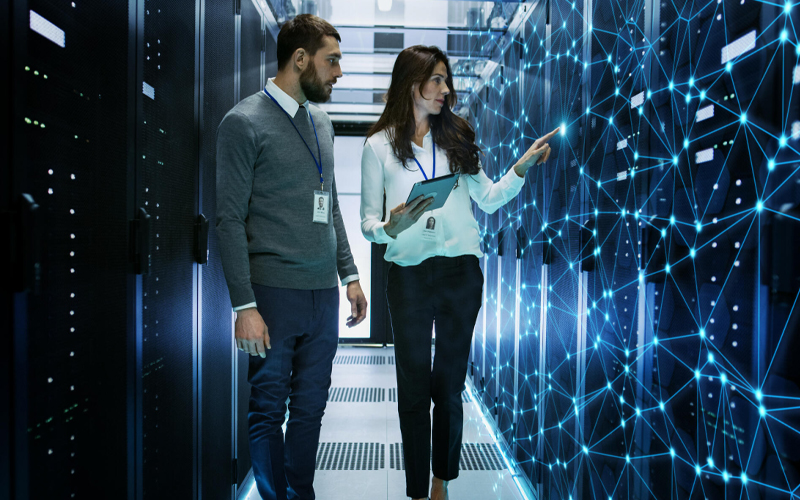Can you imagine life without the internet? Impossible, isn’t it? The digital age has transformed the lives of billions of people across the globe. Whether it be career opportunities or online businesses, remote and hybrid work models, the almost instantaneous availability of information; all of these are products or services enabled by cutting edge technology that continues to grow by leaps and bounds. With vast amounts of business and personal data being stored in public and private clouds, as well as the dependency on systems, it becomes increasingly necessary for businesses to protect both data and applications from a multitude of threats. Organisations can no longer rely on standard cybersecurity norms such as firewalls, anti-phishing and antivirus software.
The COVID-19 pandemic has resulted in an explosion of remote workers resulting in the requirement for stringent security measures for both applications and data. More and more businesses are expected to adopt a cloud-first policy, with Gartner estimating that 95 per cent of new digital workloads will be deployed on the cloud. Enterprises need to be proactive in terms of reviewing the cybersecurity strategy periodically. Complacency can be the biggest downfall of a business. Cyber criminals are increasingly wily and use the cloud infrastructure to launch malicious attacks. Targeting sensitive data such as user credentials, trade secrets and banking data, they make businesses increasingly vulnerable. Remote code execution and malware are on the rise. The digital transformation of businesses has resulted in the instantaneous availability of critical business data to meet rising customer expectations, while at the same time increasing the risk of data breaches and the extreme need for data protection. That aside, the legal implications of data breaches and data loss could be severe. Businesses require robust cybersecurity strategies in place to minimise and protect themselves against cyber attacks.
Proactive measures for cybersecurity
Employee training:
The explosion of remote workers has resulted in cybercriminals taking advantage of vulnerabilities due to unsecured networks or devices, and targeting unsuspecting employees. A training program that is periodically updated helps to increase employee awareness in information security and its importance, possibly preventing large-scale attacks. Cyber security training programs help organisations make employees cognizant of security risks, policies, data protection as well as legal and compliance requirements. Additionally, employees will also understand the protocol to be followed in the event of an attack occurring at an individual or organisational level.
Access and authorisation controls:
Organisations must periodically review the list of people with access to data and systems. The security policy must include standard security measures such as two-factor authentication, password policies, user access and authorisation controls. Intrusion detection systems, when combined with these controls, can help identify anomalies quickly. Users must be forced to change passwords at periodic intervals and use strong passwords. Access control and authorisation should be implemented at all stages of the employee journey.
Assess risk:
The proactive identification of risks and vulnerabilities that the organisation is exposed to will help reduce threats and minimise the damage in the event of a cyber attack. Cybersecurity risk assessments should include both digital and physical threats, as well as any system failures – both hardware and software. Risk assessment also helps with identifying any gaps in regulatory and compliance requirements.
Protect IoT devices
The many millions of smart devices connected to the internet can easily be hacked by cyber criminals if the appropriate security measures are not put in place. For instance, an attack on industrial robots could cause damages worth millions in production. Tampering with healthcare equipment can result in loss of lives. As with all other systems, IoT security requires having robust password policies, protecting applications residing on the device, using trusted devices only, and using encrypted data and communication protocols.
Update and scan
Organisations should update applications and systems software to fix any vulnerabilities. Automatic and manual updates supervised by IT and infrastructure support staff are critical to ensure that no massive cyber attack can take place. Scanning for malware, installing anti-phishing and anti-spam software should form part of the first line of cyber defence. By simulating phishing attacks, companies can identify potentially vulnerable employees and users, and educate them on cybersecurity policies, or include them in training programs.
Backup data:
While it may seem a very obvious and staid thing to do, a data backup policy is as essential to any cybersecurity strategy, as breathing is to us. Data loss can occur for several reasons, and cyber crime is just one of them. By backing up data, companies reduce the risk of data loss in ransomware and malware attacks.
The uptick in digitisation of organisations requires a transformational approach to cybersecurity. A holistic cybersecurity strategy* that includes proactive risk assessment and management, digital and physical security, and covers business and cultural aspects, will help build a future-ready organisation.
*For organizations on the digital transformation journey, agility is key in responding to a rapidly changing technology and business landscape. Now more than ever, it is crucial to deliver and exceed on organizational expectations with a robust digital mindset backed by innovation. Enabling businesses to sense, learn, respond, and evolve like a living organism, will be imperative for business excellence going forward. A comprehensive, yet modular suite of services is doing exactly that. Equipping organizations with intuitive decision-making automatically at scale, actionable insights based on real-time solutions, anytime/anywhere experience, and in-depth data visibility across functions leading to hyper-productivity, Live Enterprise is building connected organizations that are innovating collaboratively for the future.








